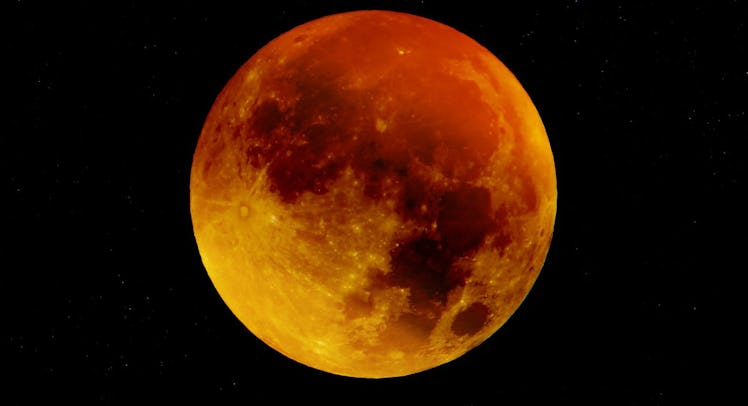Take Your Kid Outside to See the Total Lunar Eclipse Happening This Weekend
You don't want to miss this.

The moon will turn an eerie shade of red this weekend during the first and only total lunar eclipse of 2019. During the night of Sunday, January 20, the super wolf blood moon will be visible from anywhere in the United States.
The entire eclipse will last for five hours, starting at 9:36 p.m. EST on Sunday night when the moon first enters the umbra, which is the Earth’s shadow.
However, the moon will only be entirely red for 62 minutes from 11:41 p.m. to 12:43 a.m. Once it’s fully inside the shadow, air molecules in the atmosphere refract some of the light, causing the moon to turn a reddish-orange hue.
So what makes it a super wolf moon? This weekend’s eclipse is known as a super moon because it will be at the point in its orbit that’s closest to Earth (about 225,744 miles away). And the “wolf” moniker comes from the fact that it coincides with January’s full moon, commonly called a wolf moon.
Anyone in North or South America should be able to see the eclipse, as long as the skies are clear. Joe Rao, meteorologist for News 12 Westchester, told Forbes exactly where to look. “Out on the West Coast, where totality occurs only a few hours after moonrise, the moon will be about 50-degrees above the horizon during totality. In the Eastern US, the Moon will be even higher [and] from south Florida it will be almost directly overhead at mid-totality.”
Only two other eclipses have been visible across the entire U.S., in 1968 and 2001. And Sunday’s solar event will be the first total lunar eclipse since July 27, 2018 (which was only visible in parts of Africa and Asia) and the last one until May 26, 2021.
You can find more information, along with a live stream of the eclipse (if weather conditions are cloudy where you live), on NASA’s website.